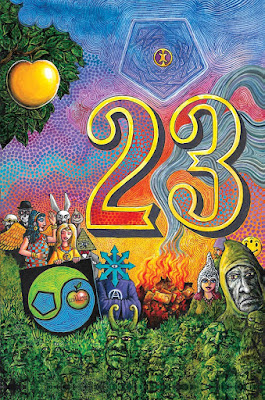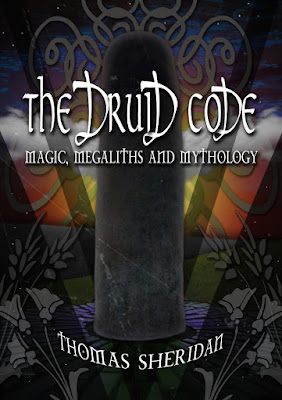Review: Psychedelic Journal XXIII-The Discordian Issue.
Issue 23 of
the Psychedelic Press journal examines Dicordianism from both a historical and
cultural perspective. Along the way writings encompass the magickal, artistic
and, of course, the personal transformative effects of this paradigm-shifting philosophy.
The journal
includes contributions from nine contributors as well as a wonderful
introduction and overview by the editor, Nikki Wyrd.
As a reader
might expect from a publication focused on topics such as chaos and
imagination, the chapters comprise of outlooks and experiences which might seem
disconnected on the surface level but which all demonstrate the humour, the
consciousness expanding results and, not least, the courage of the Discordian outlook.
The first included
writer, Havelock Ellis, demonstrates the exploratory nature of Discordian
thinking by describing his first encounter with mescaline. This account from
1898 details the psychedelic effects of mescaline on Ellis and his friends.
Ellis experiments with music and visions, at times seeming to transition to
symptoms of synaesthesia and profound wonder.
This
merging of what is supposedly real and lesser-accessed psychological dimensions
underpins the writing of John Constable aka John Crow as he recounts the
origins of his play The Southwark Mysteries and the continuing evolution of his
exploration of the number 23.
I was
reminded of the anonymous poem, Tom o Bedlam, and in particular the following
verse:
“With a host of
furious fancies
Whereof I am commander,
With a burning spear and a horse of air,
To the wilderness I wander.
By a knight of ghosts and shadows
I summoned am to tourney
Ten leagues beyond the wide world's end::
Methinks it is no journey.”
Whereof I am commander,
With a burning spear and a horse of air,
To the wilderness I wander.
By a knight of ghosts and shadows
I summoned am to tourney
Ten leagues beyond the wide world's end::
Methinks it is no journey.”
The journal goes on to cover the experiences and origins of
Discordianism and culture from the 20th century and into the 21st.
Although, it must be remarked that linear time itself seems a trite way to
measure reality and memory in this context. As John Crow writes, “The number 23 opens doors and pathways. It’s
the key to creative breakthroughs and magickal connections.”
Ben Graham writes about synchronicities and his own personal
journey. From science fiction to Zen to his eventual discovery of Discordianism
and metamodernism, Ben charts the stages of his spiritual quest, writing, “I needed a faith that let me stay
open-minded and questioning; an open-source religion that recognised absurdity
and could incorporate all of the countercultural vision I’d been devouring all
my life.”
Adam Gorightly pulls us back to the origins of the
Discordian adventure and the influence of Robert Anton Wilson, Greg Hill, Kerry
Thornley and Robert Shea. Gorightly also cites the influence of Bob McElroy and
Dr. Robert Newport.
Magickal and recurring motifs and synchronicities abound
until the poignant description of a Discordian reunion at a performance of Illuminatus! years later.
Catherine Kneale asks what happens when we step off the conventional
storyboard and reassemble life narrative ourselves. As is often the case with
shamanic initiations, sometimes these events are not planned and we are left
with a world view which separates us from the consensus reality and game-plan.
I was struck by the call to constantly revise our
interpretations which reminded me of Evelyn
Underhill
Speaking of perspective, David Lee’s essay explores the folk
theology and psychedelic gnosis of RAW and the roots of his MMA (Multi-model
Agnosticism) leading to Lee’s own later experiences with Chaos Magick.
Adrian Reynolds leads us through the sometimes clinical
labyrinth of NLP from a Discordian perspective, or is that the other way
around?
As Heinlein writes in Stranger in a Strange Land
“That's the odd part. It's not really a church."
"What is it?"
"Uh, primarily a
language school.”
Andy Gell and Greg Hill complete the journal with an
imaginative, fourth wall smashing, piece and a recounting of a mescaline
experience from 1965.
The Psychedelic Journal is available from Psychedelic Press here.




.png)


Comments
Post a Comment